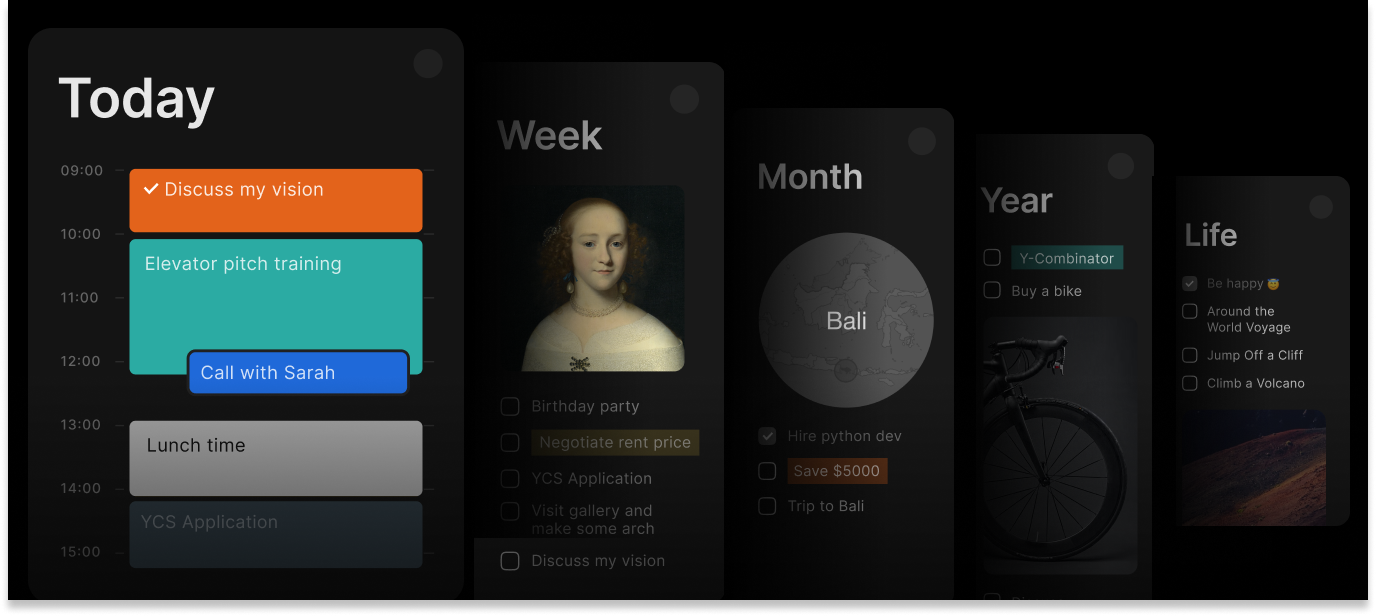Getting Things Done (GTD): Complete Guide to Productivity

In today’s fast-paced world, managing tasks and staying productive can feel overwhelming. Many people ask themselves what is GTD and how to get things done more efficiently when faced with endless to-do lists and competing priorities. The answer lies in understanding the GTD meaning and implementing the proven getting things done method developed by David Allen. This comprehensive GTD methodology provides a structured GTD framework that goes beyond simple task management, offering a complete getting things done system that can be adapted to work with various tools, from traditional paper-based approaches to modern GTD software solutions. Whether you’re looking for a getting things done template to get started or want to master the full GTD method, this powerful get things done method has transformed how millions of people organize their lives and work. The GTD approach offers a systematic way to capture, process, and organize all your commitments, creating a trusted system that allows your mind to focus on actually doing work rather than trying to remember what needs to be done.
What is Getting Things Done (GTD)?
What is GTD? Think of it as your personal productivity companion – a system that David Allen created to help people organize their tasks, projects, and commitments without losing their minds in the process. The GTD meaning goes way beyond just making lists – it’s really about building a system you can actually trust, so your brain can stop trying to remember everything and focus on the work that matters.

The Creator: David Allen
David Allen brought the GTD method to the world back in 2001 with his book “Getting Things Done: The Art of Stress-Free Productivity.” What made his approach so different was that he didn’t just focus on the nuts and bolts of organizing tasks – he really understood the mental game of productivity and how stress messes with our ability to get things done.
Here’s something interesting: Allen’s background in martial arts, especially aikido, shaped how he thinks about productivity. Just like in martial arts, he figured that the best productivity approach should be about working smarter, not harder. That’s why the GTD methodology is all about getting everything out of your head and into a system you can trust, rather than trying to juggle it all mentally.
Why GTD is Popular
The getting things done method has struck a chord with so many people for some pretty solid reasons:
- It covers everything: Unlike those basic to-do lists that leave you feeling scattered, GTD walks you through the whole process from start to finish
- It actually reduces stress: When you have a system that holds all your commitments, you can stop worrying about forgetting something important
- It’s flexible: Whether you’re a pen-and-paper person or a tech enthusiast, GTD adapts to how you like to work
- It delivers results: Millions of people have tried it and found it genuinely helps them be more productive and less stressed
The approach has become so popular that there’s now a whole ecosystem of GTD software, workshops, books, and consultants built around it. Everyone from busy executives to overwhelmed students has found something valuable in this way of organizing their lives.
The 5 Stages of GTD
The getting things done system is built around five stages that work together to create a complete workflow for handling everything on your plate. This GTD framework makes sure nothing slips through the cracks while keeping you clear on what actually needs your attention.
Stage 1: Collect
The first step of the get things done method is pretty straightforward – grab everything that’s bouncing around in your head and put it somewhere safe. This means collecting all your tasks, random ideas, commitments, and potential projects into a system where you can deal with them properly later.
What the Collect stage is all about:
- Capture absolutely everything that crosses your mind, no matter how trivial it seems
- Keep your collection tools simple – maybe just an inbox, a notebook, or an app
- Don’t try to organize anything yet – just get it out of your head
- Clear out all those mental “open loops” and commitments
The whole point here isn’t to organize or figure out priorities. You’re just doing a brain dump, getting everything from emails that need responses to grocery lists to project ideas into a trusted place where you can process them systematically.
Stage 2: Process
This is where things get interesting. The Process stage is all about looking at each item you’ve collected and figuring out what it actually means and what, if anything, needs to happen with it. This is where you’ll use that famous “two-minute rule” and decide what the next step should be for each item.
Here’s how processing works:
- Start with the oldest stuff first
- Handle items one at a time – no multitasking here
- Once you’ve processed something, don’t put it back in the collection pile
- If something takes less than two minutes, just do it right now
- If it takes longer, either defer it or pass it along to someone else
The key questions during this stage are pretty simple: “What exactly is this?” and “What needs to happen with it?” This step is crucial because it turns vague thoughts and commitments into specific, actionable items that you can actually do something about.
Stage 3: Organize
The Organize stage is where you take all those processed items and put them in the right places so you can find them when you need them. This is where having a good getting things done template structure really pays off for keeping everything organized.
The main organizational buckets:
- Next Actions (sorted by context like #calls, #errands, #computer)
- Projects (bigger outcomes that need multiple steps)
- Waiting For (stuff you’re waiting for other people to handle)
- Someday/Maybe (things you might want to tackle later)
- Reference (information you might need down the road)
The trick is to keep your organization system simple enough that you’ll actually maintain it, but complete enough to hold everything you need to track. The goal is building a system you trust that makes it easy to find what you’re looking for when you need it.
Stage 4: Review
The Review stage is what keeps your whole system honest and up-to-date. This means regularly checking in on your lists and commitments to make sure nothing gets overlooked and that your system still reflects what’s actually going on in your life.
Different types of reviews:
- Daily review: Quick check of your calendar and next actions
- Weekly review: Thorough look at all your lists and projects
- Monthly/quarterly review: Big-picture review of goals and priorities
The weekly review is really the heart of the GTD system. This is when you update your lists, check on your projects, and make sure your system is current and complete. Regular maintenance like this is what keeps the system trustworthy and actually useful.
Stage 5: Engage
The final stage is the fun part – actually doing the work. With everything captured, processed, organized, and reviewed, you can now tackle your tasks with confidence, knowing you’re making smart choices about what to work on at any given moment.
What to consider when choosing what to do:
- Context: What can you actually do given where you are and what tools you have?
- Time available: How much time do you have before your next commitment?
- Energy level: What’s your current mental and physical state?
- Priority: What’s most important given your current situation?
The beauty of the GTD system is that by the time you get to the Engage stage, you can trust that you’re making good choices about what to work on because you know your system is complete and current.
GTD with Timestripe
While the GTD method works great with all kinds of tools, modern digital platforms like Timestripe bring some really nice features that mesh perfectly with how GTD is supposed to work. How to get things done becomes so much smoother when you have the right tools backing up your system.
Timestripe’s approach fits naturally with GTD principles in some pretty cool ways:
Visual Organization: Timestripe’s timeline-based setup lets you organize tasks and projects visually, making it super easy to see what needs to happen and when. This visual element adds something special to the traditional GTD organization approach by giving you that clear timeline perspective.
Project Management: The platform’s project features really support the GTD idea that projects are outcomes requiring multiple steps. You can break down complex projects into individual tasks while still keeping sight of the bigger picture you’re working toward.
Context-Based Organization: Timestripe lets you organize tasks by context, which makes it simple to see what actions you can take based on where you are and what you have available. Whether you’re at the office, at home, or traveling, you can quickly spot the tasks that make sense to tackle.
Review and Planning: The platform’s review features support that crucial GTD review process, making it easier to maintain your system and ensure nothing gets forgotten. Regular reviews become much more efficient when you have digital tools that can sort and filter your commitments.
The combination of GTD principles with modern digital tools like Timestripe creates something pretty powerful – you get the proven effectiveness of the methodology while leveraging technology to make the whole system more efficient and accessible.
Key Benefits of Implementing GTD
When you actually implement the getting things done method properly, you get benefits that go way beyond just being more productive:
Mental Clarity: When you get everything out of your head and into a system you trust, you free up mental space for creative thinking and problem-solving instead of trying to remember what needs to be done.
Stress Reduction: Knowing that nothing will be forgotten because everything is captured in a reliable system really cuts down on stress and anxiety about dropped commitments.
Improved Focus: With a clear system for managing all your commitments, you can focus completely on the task at hand without worrying about what else needs attention.
Better Decision Making: The GTD system gives you a framework for making smart choices about what to do at any given moment based on your context, available time, energy level, and priorities.
Increased Productivity: By eliminating the mental overhead of trying to remember everything, you can put more energy into actually getting things done.
Common Challenges and Solutions
While the GTD system is powerful, plenty of people run into challenges when they’re trying to implement it. Understanding these challenges and how to handle them can help ensure you actually succeed with it:
GTD isn’t the only game in town when it comes to productivity, and that’s actually a good thing. While this methodology provides an excellent foundation for managing your commitments and tasks, combining it with complementary techniques can make you even more effective. Explore other popular productivity methods like OKR for goal alignment, Pomodoro for sustained focus, or batching for grouping similar tasks—each comes with ready-to-use templates to help you get started immediately.
Conclusion
The Getting Things Done (GTD) methodology gives you a solid framework for managing the complexity of modern life and work. By following the five stages of Collect, Process, Organize, Review, and Engage, you can build a system you trust that reduces stress while making you more productive and effective.
The key to success with GTD isn’t just understanding how it works – it’s actually implementing it consistently with tools that support your workflow. Whether you go with traditional paper-based tools or modern digital solutions like Timestripe, the important thing is finding a system that works for you and sticking with it.
Remember that GTD isn’t just about getting more things done – it’s about getting the right things done with less stress and more focus. When you have a system you can trust, you can engage with your work and life with confidence, knowing you’re making smart choices about how to spend your time and energy.
Read next

Ready to transform your productivity?
Start implementing GTD today with Timestripe and experience the benefits of a truly organized, stress-free approach to getting things done.
Get Started

